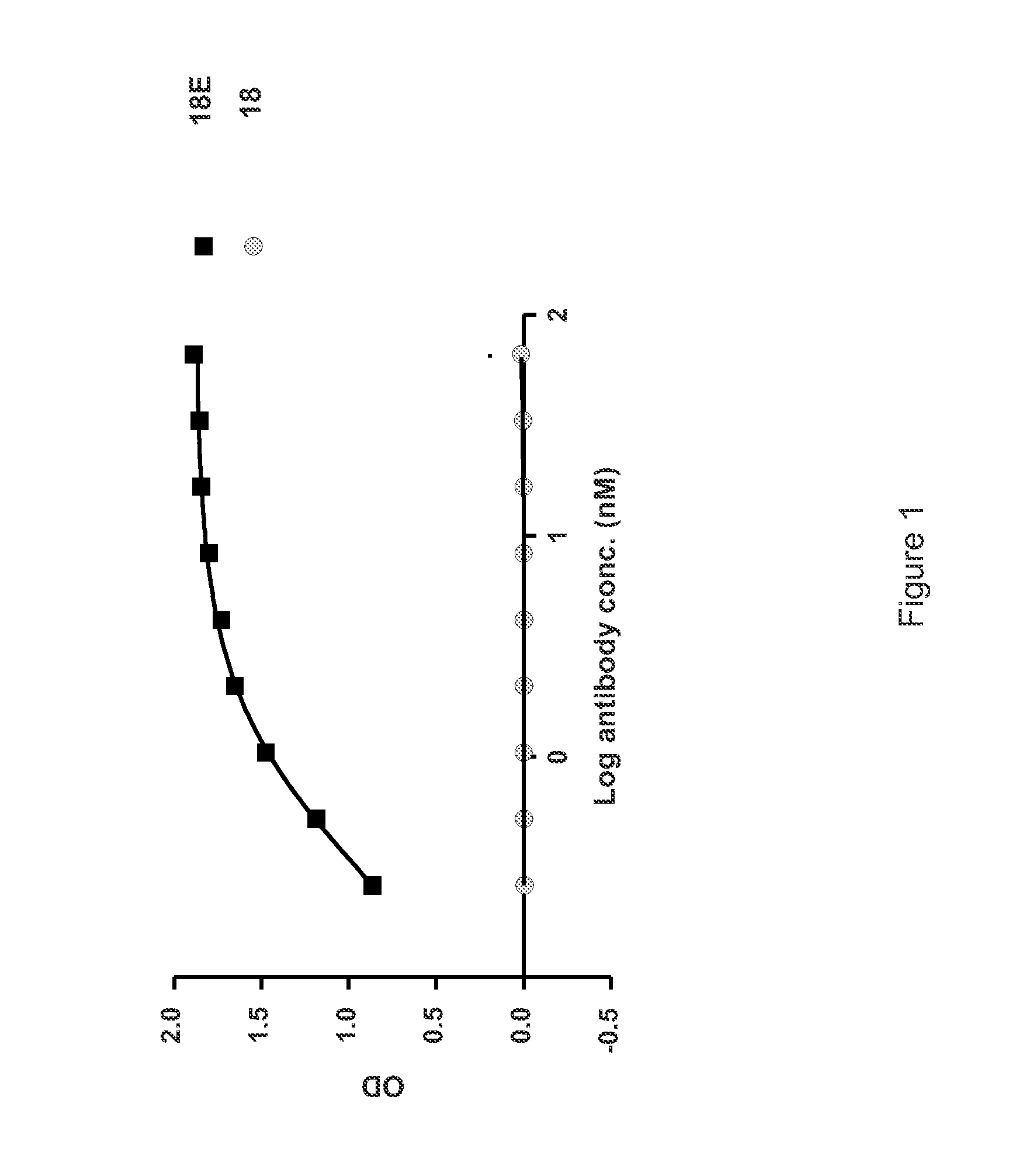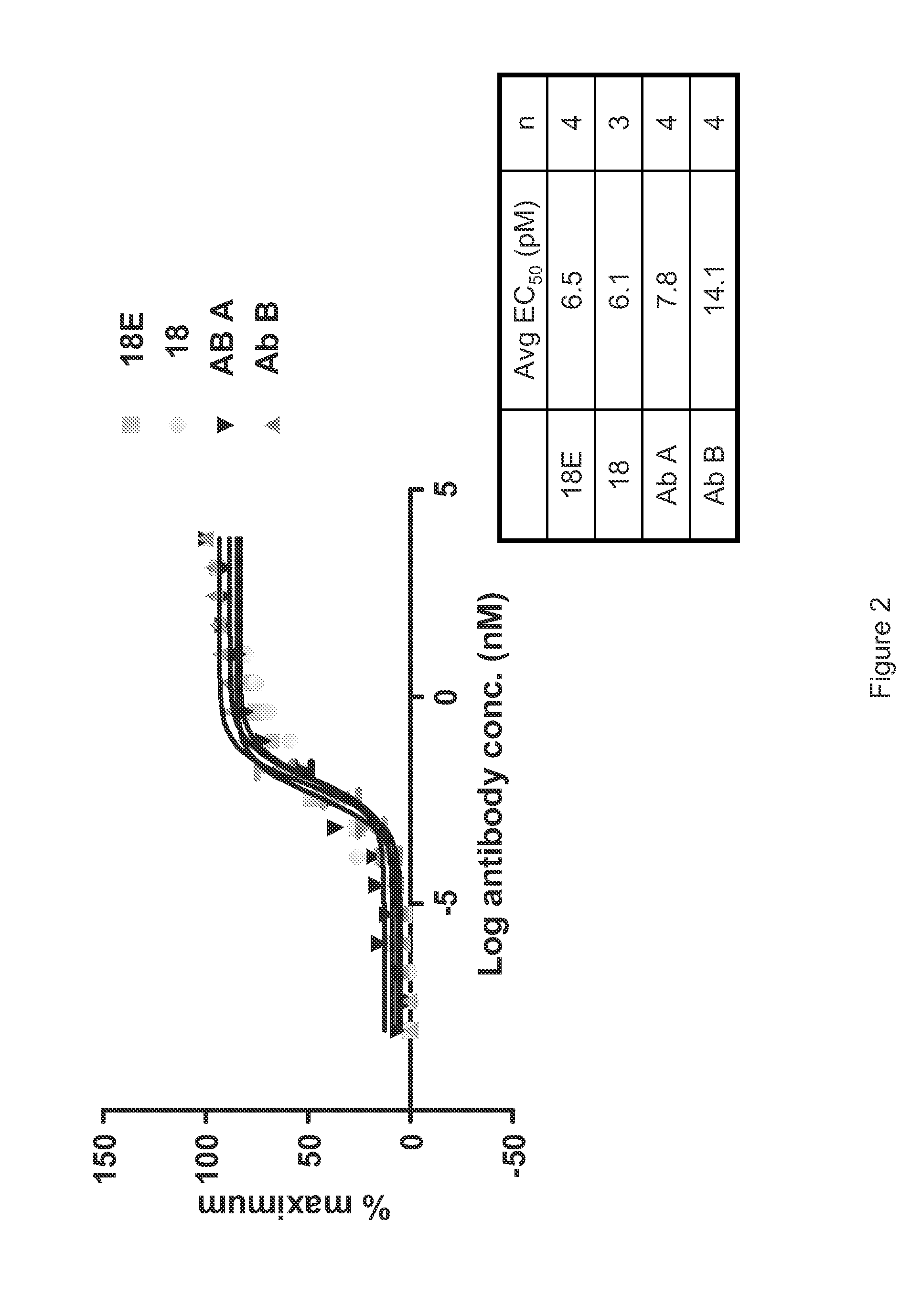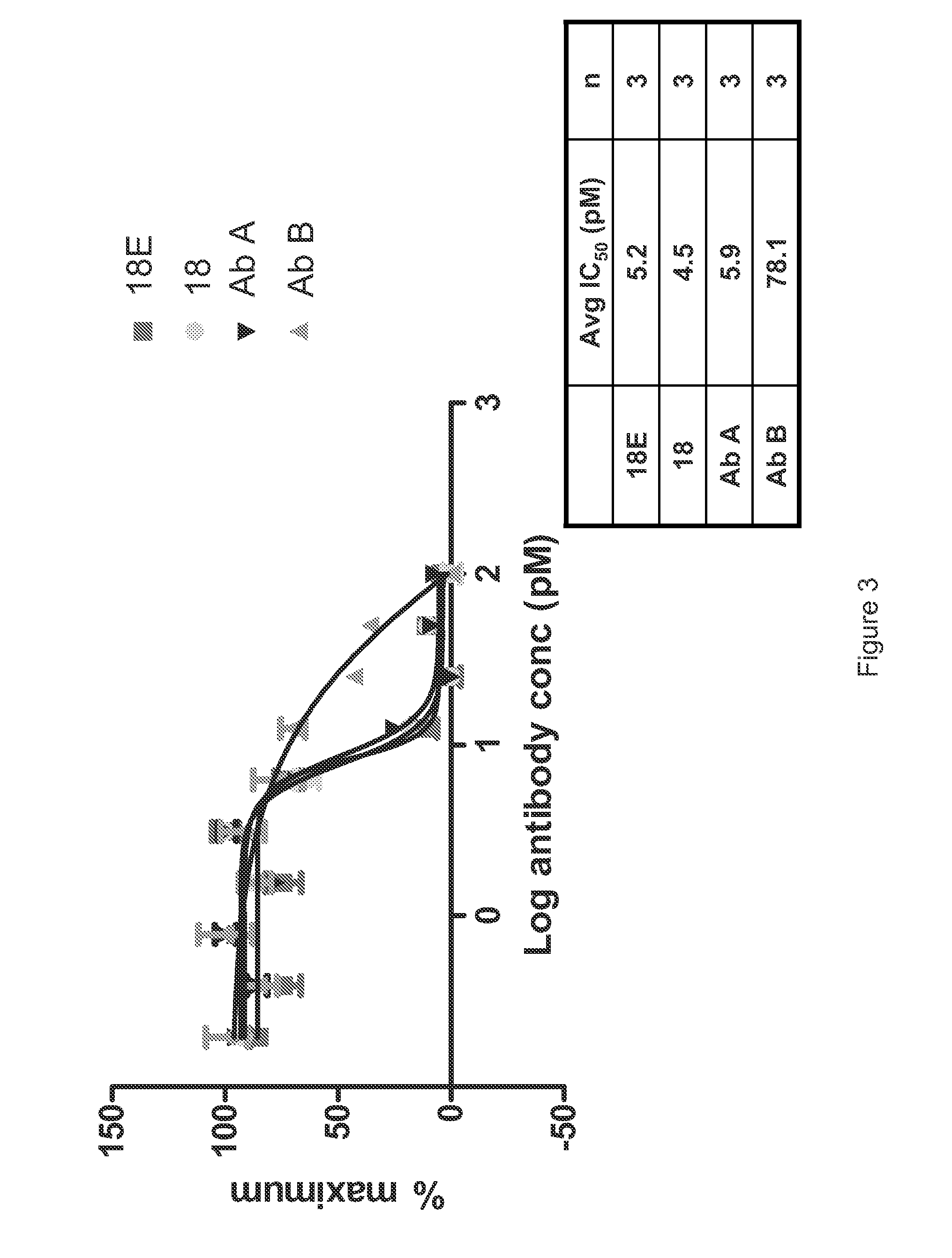Human Anti-IL-6 Antibodies With Extended In Vivo Half-Life And Their Use In Treatment Of Oncology, Autoimmune Diseases And Inflammatory Diseases
- Summary
- Abstract
- Description
- Claims
- Application Information
AI Technical Summary
Benefits of technology
Problems solved by technology
Method used
Image
Examples
example 1
Anti-IL-6 Antibody Isolation
[0535]A detailed description of the isolation of Antibody 18 and other anti-IL-6 antibodies that may be used to practice the inventions described herein is provided in PCT Publication No. WO 2008 / 065378. Briefly, a precursor to Antibody 18 was isolated through a phage display library screen using recombinant human IL-6 as a target. The precursor was subjected to affinity optimization to generate several high affinity human anti-IL-6 antibodies. The characterization of these antibodies is described in PCT Publication No. WO 2008 / 065378. Antibody 18 is capable of blocking IL-6 binding to IL-6R. Antibody 18 binds to human and cynomolgus IL-6, but does not bind to IL-6 derived from murine, rat or dog. Antibody 18 binds to human IL-6 with an affinity that is higher than the 10 pM detection level of the BIAcore assay. The affinity of Antibody 18 to human IL-6 was estimated at 0.40 pM (95% CI 0.12 pM-0.69 pM) using the TF-1 Cell Proliferation Assay.
example 2
Anti-IL-6 Antibody with Increased Half-Life
2.1 Generation of Variant Anti-IL-6 IgG1 Antibody Comprising an Fc Region Having the M252Y, S254T and T256E Substitutions
[0536]The expression vector encoding Antibody 18 was modified using standard laboratory methods to introduce the M252Y, S254T and T256E substitutions into the Fc region. The modified Antibody 18 comprising the M252Y, S254T and T256E substitutions is hereinafter referred to as Antibody 18E or 18E.
[0537]The polynucleotides encoding the heavy and light chains of an anti-IL6 antibody may be subjected to nucleic acid sequence optimization. The final goal of the sequence optimization process is to create a coding region that is transcribed and translated at the highest possible efficiency. Sequence optimization is achieved by a combination of: (i) codon usage optimization, (ii) G / C content adaptation, (iii) elimination of internal splicing sites and premature polyadenylation sites, (iv) disruption of stable RNA secondary struct...
example 3
Efficacy in the Mouse FCA-Induced Inflammatory Pain Model
[0558]mAb406 (anti mouse IL-6, purified from monoclonal IgG1, clone MP5-20F3, lot AHV100904A, R&D Systems) was tested for its ability to reverse inflammatory pain induced by a local subcutaneous administration of Freund complete adjuvant, (“FCA”) (20 microliters) in the mouse tail (3 cm from the distal tip of the tail). This substance produces a local inflammatory response gradually involving over time and reaching a plateau between 24 h and 48 h after administration. The resulting inflammation produces a hypersensitivity to thermal or mechanical stimulation of the tail. Thermal hyperalgesia is assessed by recording the withdrawal latency of the tail from a thermal stimulus (warm water, 46° C.), while mechanical hyperalgesia is evaluated by the withdrawal threshold of the tail from a steadily increasing pressure generated by an analgesymeter (Randall Selitto apparatus). The IgG1 isotype control (mAb005, purified from rat monoc...
PUM
| Property | Measurement | Unit |
|---|---|---|
| Fraction | aaaaa | aaaaa |
| Mass | aaaaa | aaaaa |
| Mass | aaaaa | aaaaa |
Abstract
Description
Claims
Application Information
 Login to View More
Login to View More - R&D
- Intellectual Property
- Life Sciences
- Materials
- Tech Scout
- Unparalleled Data Quality
- Higher Quality Content
- 60% Fewer Hallucinations
Browse by: Latest US Patents, China's latest patents, Technical Efficacy Thesaurus, Application Domain, Technology Topic, Popular Technical Reports.
© 2025 PatSnap. All rights reserved.Legal|Privacy policy|Modern Slavery Act Transparency Statement|Sitemap|About US| Contact US: help@patsnap.com



